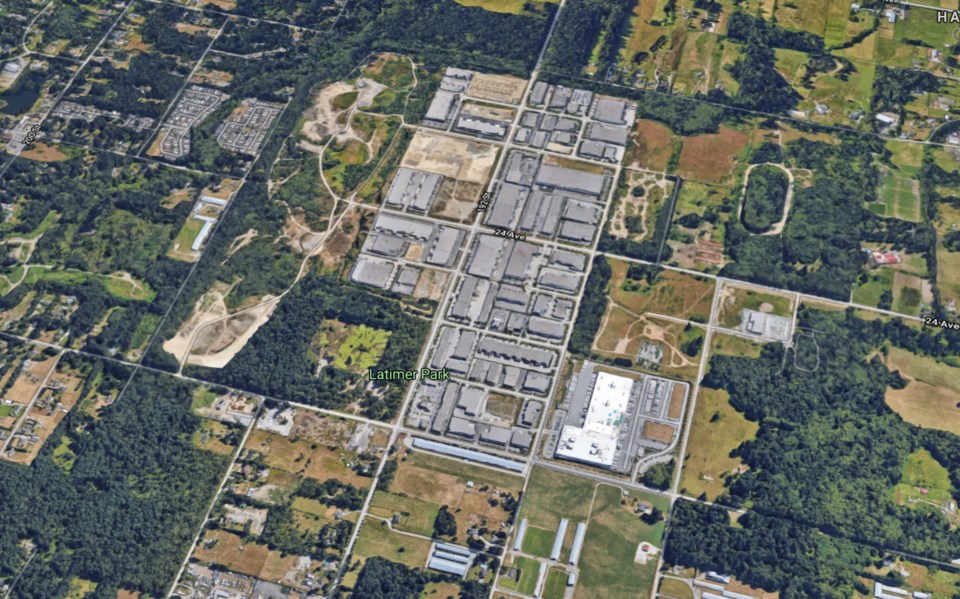A City of Surrey proposal to convert 245 hectares of agricultural and rural land to a light industrial-commercial park pitted residents concerned about climate change mitigation against those asking for more employment opportunities.
On Monday night, Surrey city council sided with the latter group of residents by choosing to send proposed amendments to the South Campbell Heights Area Plan to Metro Vancouver for approval before rubber-stamping the new industrial area.
Although the city’s public consultation process received criticism for poor outreach and the controversial decision was made in the middle of summer, the vast majority of Surrey residents opposed the plan, largely citing environmental concerns. However, Safe Surrey Coalition council members (Mayor Doug McCallum and Couns. Laurie Guerra, Allison Paton, Mandeep Nagra and Doug Elford) ultimately gave more consideration to area landowners, who formed the bulk of the support.
The landowners openly contested that Surrey needs more space for industrial land, although they were quiet on the personal profits they stand to gain from rezoning.
Meanwhile, opponents cited concerns about developing a large swath of green space, which can act as a buffer to climate change impacts, such as the recent heat wave suspected to have killed dozens of local residents last month. As well, residents cited concerns about the developments destroying the Brookswood aquifer beneath and removing water from the salmon-bearing Little Campbell River, which runs through the proposed industrial-business park.
Nevertheless, city staff claimed there will be additional setbacks for the river, and trails for local employees and visitors will be created. Within the proposal, about one-third of the land (that which is wooded and along the river) will remain dedicated as “conservation and recreation,” while two-thirds (that which is primarily open fields) will be zoned as “mixed employment,” from its current “rural” designation.
Notably, none of the land is part of the Agricultural Land Reserve. Proponents and staff pointed out that much of the land had been destroyed for farming purposes by past gravel excavation.
“Property owners like myself overwhelmingly support this plan,” said Harminder Pawar.
Some residents challenged this assertion, but even if it were the case, they argued the green space should not be converted as it runs contrary to mitigating climate change impacts.
Surrey Environmental Partners leader Deb Jack said her group wasn’t consulted. She argued for the land to be a park.
“The highest and best use is for parkland. This area is a high value biodiversity ecosystem, one of few left in Surrey of appreciable size. Surrey has no regional park presence in its lower four-fifths. Why not? Why are we so ill-provided with regional parks?” said Jack.
“Biodiversity loss is a crisis, here and globally,” she said, adding more green space is needed for environmental crises, such as the COVID-19 pandemic.
Mayor McCallum took criticism from many public hearing attendees via phone, as he had campaigned on promising a park in the area. McCallum was critical of his fellow 2018 mayoral contestant Tom Gill for proposing – then as a councillor – the development in 2018 (with homes) on grounds it would affect salmon spawning and the aquifer. The city’s report concedes, “The core areas of the conservation designation are largely the same as the previous Stage 1 plan” from 2018.
Some proponents also used climate change as a means to argue their case to develop the land. At least a few of the over 100 speakers mentioned the need to work in the community they live in to lessen commute times.
Opponents noted the existing Campbell Heights (north) industrial park has no transit service and neither would this one. Staff said the new industrial park would depend on single-occupant vehicles.
The Surrey Board of Trade supports the industrial development as well. But it’s currently organizing “vanpools” for employees in Campbell Heights.
The amendments are not just a city matter. They speak to how the region will grow, and the impact of the proposed industrial park on neighbouring jurisdictions were clear, with many Langley residents calling in to oppose it on water safety and traffic concerns. Langley and White Rock councils also raised concerns about the proposal.
Meanwhile, city staff did not consult with the Semiahmoo First Nation.
“Semiahmoo has received no information from the city to make any kind of free, prior or informed consent with regard to this bylaw. Without having any of this information we can probably tell you we do not support this,” said councillor Joanne Charles, whose nation rests on the mouth of the river, near White Rock.
South Campbell Heights amendments were last proposed in 2018 but rejected on grounds that it included residential developments, which would have run contrary to the region’s Urban Containment Boundary, which directs all new housing within it (South Campbell Heights is outside the UCB). This proposal has no residential lots proposed and staff expect it to pass as the 2018 one did save for the residential component.
The city report provides no detailed economic impact assessment. Rather, it said, “The proposed South Campbell Heights Plan will help address the industrial land supply and provide opportunities to accommodate both new industrial businesses and those businesses that are seeking to expand their operations.”
Some opponents called for pragmatic solutions, including utilizing rooftop space for green space or parking to further lessen the footprint. If the south development is anything like the existing one to the north, Surrey residents can expect single-storey warehouses and two-storey commercial buildings sprawled across the lands.



